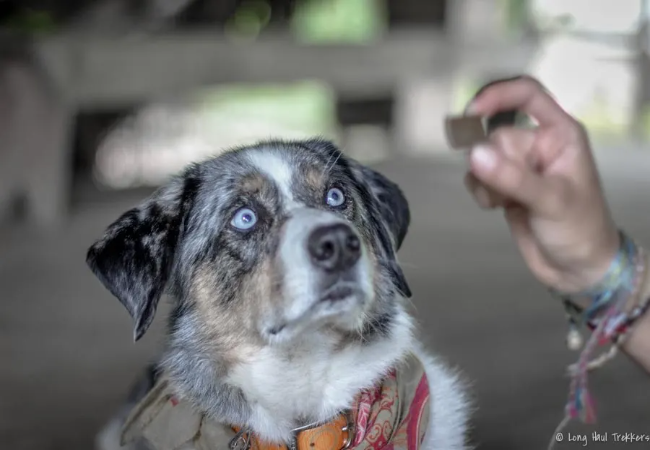Impulse Control for Dogs: Vet Tips for Patience & Focus 🐶✨

In this article
Impulse Control for Dogs: Vet Tips for Patience & Focus 🐶✨
By Dr. Duncan Houston BVSc
Does your dog bolt through doors, grab food before it's offered, or leap up in excitement the second something moves? These are all signs of poor impulse control—and the good news is, it's a skill they can learn.
I’m Dr. Duncan Houston. In this article, I’ll share how to teach your dog impulse control using vet-backed, rewardbased training that builds focus and calm—even in high-energy dogs.
🧠 What Is Impulse Control?
Impulse control is your dog’s ability to pause, wait, or disengage—even when they really want something. It’s a life skill—not a personality trait—and it can be trained over time like any other behavior.
🧭 Why It Matters
- 🚪 Prevents door dashing and bolting
- 🍖 Stops food snatching or counter surfing
- 👶 Reduces jumping on people and overexcitement
- 🐾 Increases your dog’s confidence and safety
✅ VetApproved Impulse Control Exercises
1. Wait for Food
- 🍽️ Ask for a sit. Slowly lower the food bowl.
- 🐕 If they move, lift the bowl. Repeat until they wait calmly.
- 🥇 Release with a cue like “okay” or “free” once they hold position.
2. Leave It
- 🎾 Place a lowvalue treat on the ground and cover it with your hand.
- 👀 When your dog backs off or looks at you—mark and reward with a better treat.
- 📈 Progress to uncovered items and longer holds over time.
3. Doorway Boundaries
- 🚪 Ask for a sit at the door.
- 🧍 Open it slightly—if they move, close it. Reward stillness.
- ✅ Release with a cue and calmly walk through together.
4. Settle on a Mat
- 🪑 Teach your dog to lie on a bed or mat with a chew
- 🎯 Helps them “choose” calm in busy environments (e.g., guests arriving, during dinner)
🎓 Timing Is Everything
- ⏱️ Reward the exact moment they pause or wait
- 🧠 Don’t bribe—wait for the behavior, then reward
- 🔁 Keep sessions short (5–10 minutes) and build up slowly
🚫 What Not to Do
- ❌ Don’t shout or yank the leash—it increases arousal, not control
- ❌ Don’t use punishment-based tools to “force” calm
- ❌ Don’t ignore the calm moments—reward them!
📅 Sample Daily Impulse Control Routine
| Time | Exercise | ||| | Morning | “Wait” before breakfast bowl | | Midday | “Leave it” with toys or treats | | Afternoon | Practice door boundary before walk | | Evening | “Settle on mat” with chew while family eats |
🎁 Gear That Supports Calm, Controlled Behavior
- Dual Pocket Dispenser – Deliver calm and training rewards on the spot
- Explorer Harness – Keeps dogs grounded and secure during door training and leash drills
- Bungee Lead – Minimizes leash frustration during impulse training outside
💬 What Dog Parents Say
“We thought our dog was just ‘wild’—but after two weeks of ‘wait’ and ‘leave it,’ he was calmer than ever.” – Megan & Zuko
“Impulse control training gave our rescue the structure he needed. We finally feel in sync.” – Josh & Luna
👩⚕️ Want a Custom Impulse Control Plan?
Send your dog’s energy level, behavior triggers, and home routine to Ask A Vet for a vetreviewed strategy to build calm, reliable responses.
Final Thoughts
Impulse control doesn’t make your dog less happy—it makes them more focused, more polite, and more at ease in a busy world. With the right timing, tools, and patience, your dog can learn to pause before they pounce—and life gets better for everyone.






